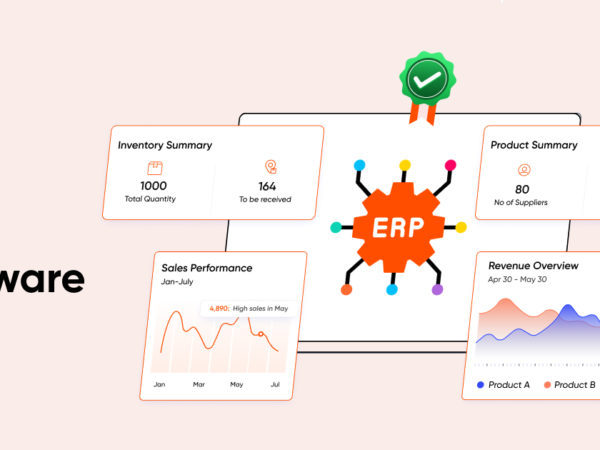A document management system (DMS) is a central hub for storing, organizing, and sharing digitized documents. It streamlines digital workflows and empowers the workforce. Businesses that still rely on paper files or records can digitize their documents and enjoy the benefits of the document management system, such as automation and security.
This article will explain different aspects of a DMS so that companies willing to switch to a DMS can make an informed decision. It will also help organizations already using DMS understand its full capability.
What is a Document Management System?
The document management system (DMS) is an application that stores and manages electronic documents. Consider it as an electronic filing cabinet for business documents. It works as a secure repository for all important documents of an organization.
DMS makes searching, sharing, and collaborating easier on electronic files. It also streamlines business workflows through automation and offers improved security and regulatory compliance.
How Does a Document Management System Work?
The functioning of a document management process involves four major steps, which are outlined below.
Capture
In the first stage, the documents arrive at the system from various sources. Physical documents are scanned, while digital files are uploaded or collected. DMS supports capturing emails, system-generated reports, or other applications like ERP and CMS. This is the time when the DMS usually extracts key information or metadata automatically for indexing.
Storage
After capturing, all documents are securely stored in a central repository. These are organized properly for easy retrieval. At this stage, users need to set access controls so that only authorized users can view, edit, or download documents.
Retrieval
DMS has powerful search tools that allow users to locate specific documents from the hub. It supports searching through keywords and metadata or full-text search. Version control plays a key role in document retrieval, enabling access to the latest version and revert to previous versions.
Distribution
Another function of DMS is to securely share documents in electronic format with all stakeholders, such as colleagues or external parties. For this, the document management system offers workflow automation features for streamlined document routing and approval.
Types of Document Management Systems
Content Management System (CMS)
Content management system enables creating, editing, and managing digital content like website articles and social media posts. It is used for collaboration and website content management.
Document Imaging System
Document imaging system is used to convert physical documents into files of digital format. It simplifies the transition from paper-based systems to digital workflows and supports easy storage, retrieval, and sharing.
Enterprise Content Management (ECM)
Enterprise content management system goes beyond basic content management and allows organizations to handle all document types, including emails, videos, and business records. It offers a broader view of information within an organization.
Workflow Management System
Workflow management system automates document-related tasks, such as approvals, routing, and revisions. It streamlines document processing and improves the efficiency of the employees.
Records Management System (RMS)
Records management system is a dedicated solution for managing and tracking long-term official records. It comes with advanced features for secure archiving and compliance tracking.
What are the Key Features of a Document Management System?
Document Capture and Indexing
An efficient document management system allows the scanning or uploading of physical and digital documents. It automatically extracts document metadata for easy searching and retrieval.
Version Control
Another important feature of a document management system is version control. It keeps a record of the track changes in a document and provides a historical record of edits. If necessary, users can go back to the previous versions. It also ensures everyone is working on the latest version.
Document Security
Since a DMS stores all the critical documents of a business, it provides necessary security features. Permission-based access control limits access to authorized users and prevents unauthorized modification or deletion.
Document Search and Retrieval Systems
A document management system comes with powerful search tools for locating specific documents quickly. It uses indexed metadata and full-text search capabilities to simplify the document-finding process, saving time and frustration.
Workflow Automation
Automation is a prime feature of any DMS that streamlines manual tasks associated with documents, such as approvals, routing for signatures, revisions, and triggering notifications.
Collaboration Tools
These tools enable teams to work together on documents simultaneously. These help users add comments, track changes in real-time, and foster better communication.
Audit Trails
Audit trail records all user activity related to documents for transparency, accountability, and regulatory compliance. The trails include who accessed them, what changes were made, and timestamps for the activities.
Integration with Other Systems
Most document management systems seamlessly integrate with other business applications like Customer Relationship Management (CRM), Enterprise Resource Planning (ERP), and accounting software. This enables organizations to manage all their information from a unified platform.
Disaster Recovery and Backup
As a central repository of all business documents, DMS offers secure backup and recovery solutions to ensure business continuity. The backups come in handy during hardware failure, natural disasters, or cyberattacks.
What are the Benefits of a Document Management System?
The benefits of a document management system are outlined below.
- Centrally store and manage all digitized documents
- Instant access to documents by authorized users
- Cloud-based DMS allows file access from any location
- Better searching with keywords and metadata
- Improved document organization with indexing and tagging
- Version control and tracking for transparency
- Simultaneous document editing by multiple users
- Automate approval, routing, and archiving of documents
- Business continuity during a natural disaster
- Protection against unauthorized access by internal employees
- Facilitate secure storage of electronic files for peace of mind
- Regulatory compliance with global and local laws and standards
What are Some Challenges Associated with a Document Management System?
Like any other software, a document management system also has certain challenges. These are the common problems organizations face while implementing a document management system.
Managing Paper-Based Documents
The biggest challenge of a DMS is to convert paper documents to digital format. Scanning and properly indexing the physical documents requires time and resources. If the organization has a large backlog of paper files, it becomes more complex.
User Adoption
Companies need to offer comprehensive training to their employees before introducing them to a new system. Encouraging employees to adopt a new system is a challenge that needs clear communication.
Customization and Personalization
A DMS may not have the features to address the workflows of every department within an organization. Finding a system that can be customized with departmental applications can be a challenge.
Security and Compliance
To entrust a DMS with sensitive and confidential documents comes with a lot of risks. Organizations must ensure that the electronic document management system can keep the documents secure and compliant.
Integration with Existing Systems
Companies need to select a document management system that integrates with existing business applications, which can be a technical hurdle.
Cost Management
Besides the initial costs of a DMS, the ongoing maintenance fees are also a major concern for businesses.
Scalability and Flexibility
For larger organizations, choosing a DMS with scalable storage capacity to accommodate future needs can be challenging. However, it saves them from the need for frequent upgrades or software migration.
What are Some Document Management Software?
Box, Zoho WorkDrive, and Folderit are some renowned DMSs. These applications offer robust features for managing all an organization’s documents. In another article, we discussed the best document management software.
Box
Box offers a secured system where organizations can create and co-edit business documents using real-time cloud collaboration tools like Box Canvas and Box Notes. This cloud-based document management system also has a virtual whiteboard tool, pre-built workflow templates, custom-configured templates, a mobile app, and a no-code builder.
Box comes with a range of security features such as AES 256-bit encryption, seven types of user permission, application controls, device trust, and AI-powered data theft alert.
Zoho WorkDrive
Zoho WorkDrive is a central document repository service provider suitable for all major industries. Teams can have their separate folder within this hub to store the documents they need. It sends instant notifications to the teammates when documents are changed.
Video monitoring, access permission, biometric access, and data encryption are other key benefits of Zoho WorkDrive. Besides unlimited version history and contextual comments on the documents, it has a check-out feature that prevents everyone else from accessing a file when one person is working on it.
Folderit
Folderit is a popular sustainable document management solution. It enables users to find information based on name, keyword, metadata, and content. Its optical character recognition (OCR) technology makes images of paper and scanned documents searchable.
Folderit offers features like document numbering, audit trail logs, custom metadata, reminders, and file linking. It uses bank-level encryption, customized password policies, and two-factor authentication for security.
What is the Difference Between a Document Management System and a Document Storage
| Basis | Document Management System | Document Storage |
|---|---|---|
| Functionality | Storage, organization, and management of documents | Storage of electronic documents |
| Search | Search by keyword or metadata | Basic search feature |
| Collaboration | Enhanced collaborative features | Limited or no collaboration |
| Workflow management | Task automation, like approval | Does not support workflow |
| Compliance | Meets industry regulations and data privacy laws | Usually not suitable for regulatory compliance |
| Version control | Track changes and rollback to previous versions of documents | Limited or no version control |
| Security | Advanced security features | Basic security features |
Conclusion
This is the era of digitization, and depending on physical documentation negatively affects the workforce efficiency of any organization. Hence, businesses should switch to a document management system to automate document workflows and free their staff from mundane tasks they need to perform daily. Here, we discussed the benefits and challenges of a DMS, along with its types and working processes, that should help organizations choose a suitable DMS.
FAQs
What Is an Example of DMS?
Box, Zoho WorkDrive, and Folderit are examples of document management systems or DMSs.
What Is the Difference Between DMS and CMS?
DMS, or document management system, is a storage facility for structured documents such as contracts and invoices. CMS or content management system focuses on creating and publishing website content and social media posts.
Is SharePoint a Document Management System?
Yes, SharePoint is a document management system that allows users to store, access, search, and manage documents.



